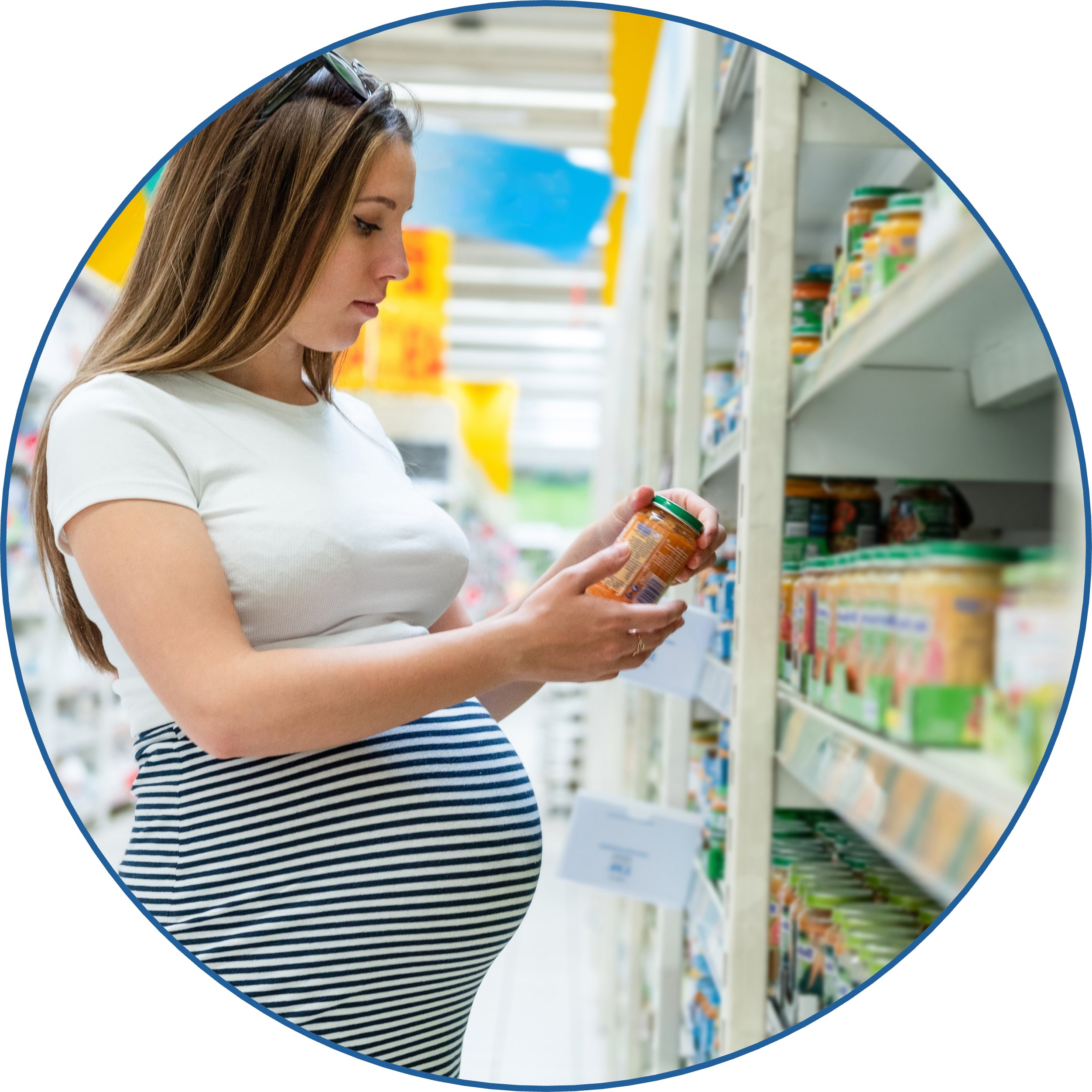Breastfeeding
- Is there a new food package for partially breastfeeding participants?
Yes. The final rule established a separate food package, Food Package V-B, for partially breastfeeding participants – previously pregnant and partially breastfeeding participants received the same food package. Food Package V-B recipients, which also includes both partially breastfeeding participants and pregnant participants with two or more fetuses, receive a higher cash-value benefit for fruits and vegetables and more canned fish compared to pregnant participants with one fetus.
Infant Formula
- What are “up to” amounts for infant formula? Is there still a range of ounces that must be issued (no less than the full nutrition benefit (FNB), but no more than the maximum monthly allowance (MMA))?
The change to “up to” amounts for infant formula is intended to support each person’s breastfeeding journey and depends on an individual assessment of how much formula each partially breastfed infant needs.
The FNB is intended to provide close to 100 percent of the nutritional needs of a non-breastfed infant from birth to 6 months of age. WIC state agencies must provide at least the FNB authorized to non-breastfed infants up to the MMA for the physical form of the product specified for each food package category unless the food package is tailored to allow “up to” amounts to support breastfeeding. Formula provided to infants in any form may not exceed the MMA.
Infant Foods
- At what age can infants have a cash-value benefit (CVB)?
Starting at 6 months of age, the WIC state agency many offer the CVB substitution for infant fruits and vegetables.
At age 1 year, the participant would then be recertified as a child and receive Food Package IV, which includes a standalone CVB.
- What are the cash-value benefit (CVB) substitution amounts for infants?
Starting at 6 months of age, state agencies may offer infant participants:
- a $20 CVB in place of the full amount (128 ounces) of jarred infant fruits and vegetables, or
- a $10 CVB and 64 ounces of jarred infant fruits and vegetables.
- Will the cash-value benefit (CVB) substitution amounts for infants also be updated with inflation?
Yes. The CVB substitution amounts for jarred infant fruits and vegetables will be adjusted annually for inflation consistent with the annual inflation adjustments made to CVB values for adult and child participants. The revised amounts will become effective on Oct. 1 of each year.
- When substituting a cash-value benefit (CVB) for jarred infant fruits and vegetables, what forms are allowed (fresh, frozen, or canned)?
WIC state agencies must allow fresh and at least one other form (frozen or canned) when issuing a CVB substitution for jarred infant food fruits and vegetables. Dried fruits and vegetables pose a choking hazard and, therefore, are not allowed for infants.
- Can a WIC state agency make the cash-value benefit (CVB) the default for infants at 6 months instead of jarred infant fruits and vegetables?
While state agencies may not categorically issue a CVB substitution for jarred infant fruits and vegetables, they may explore options within their MIS to reduce administrative burden for WIC staff when individually tailoring food packages.
If a state agency establishes pre-tailored food packages in their MIS for administrative convenience, they must ensure that each participant is informed about and can be issued the standard foods in their prescribed food package outlined in regulations at 7 CFR 246.10(e), 7 CFR 246.10(b)(2)(ii)(A) and 7 CFR 246.11(a)(1).
When individually tailoring food packages, nutrition education should be provided to caregivers addressing developmental readiness, safe food preparation, storage techniques, and feeding practices.


